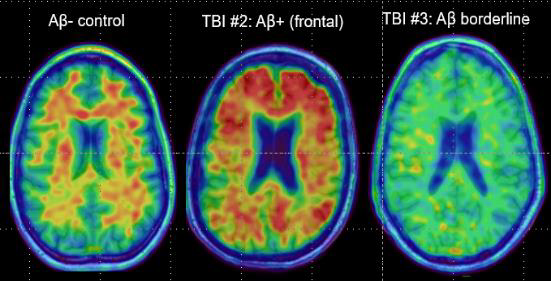Traumatic Brain Injury (TBI) is a leading cause of death and disability worldwide and a risk factor for later development of Alzheimer's disease (AD). TBI causes increased axonal production and rapid brain deposition of amyloid, a pathologic hallmark of AD. Persistence of amyloid in the brain after TBI may underlie TBI as a risk factor for AD. For this project, using positron emission tomography (PET), the Butler lab will measure the amount of amyloid in the brain immediately (within 14 days) following moderate or complex mild TBI, and again one year later. The team hypothesizes that brain amyloid will be reduced/cleared over the recovery period. Critically, the team will assess the presumptive mechanism by which amyloid is cleared from the brain using a new dynamic PET method this lab developed. The method quantifies the rate and magnitude of radiotracer removal from the brain’s ventricles, providing a measure of cerebrospinal and interstitial fluid (CSF/ISF) clearance the lab has termed vCSF-clearance. In animal models, CFS/ISF clearance via the recently-described brain glymphatic system has been shown to be critical for clearing the brain of waste products including amyloid, and to be diminished after TBI. The lab’s preliminary data in humans show that vCSF-clearance is inversely proportional to the amount of amyloid present in the brain, and can differentiate patients with AD from controls. The lab will test the hypothesis that post-injury vCSF-clearance predicts the reduction in amyloid lesions over one year. The lab will also determine if vCSF-clearance predicts cognitive, functional and symptomatic outcome from TBI, and assess relationship between vCSF clearance and blood levels of brain proteins like neurofilament light protein (NfL) used as biomarkers of TBI severity, and depend on clearance mechanisms to travel from brain to blood. Results from this project will provide novel information about the contribution of vCSF-clearance to amyloid removal after TBI relevant to TBI recovery, as well as to the longer term risk of post-TBI neurodegeneration.


